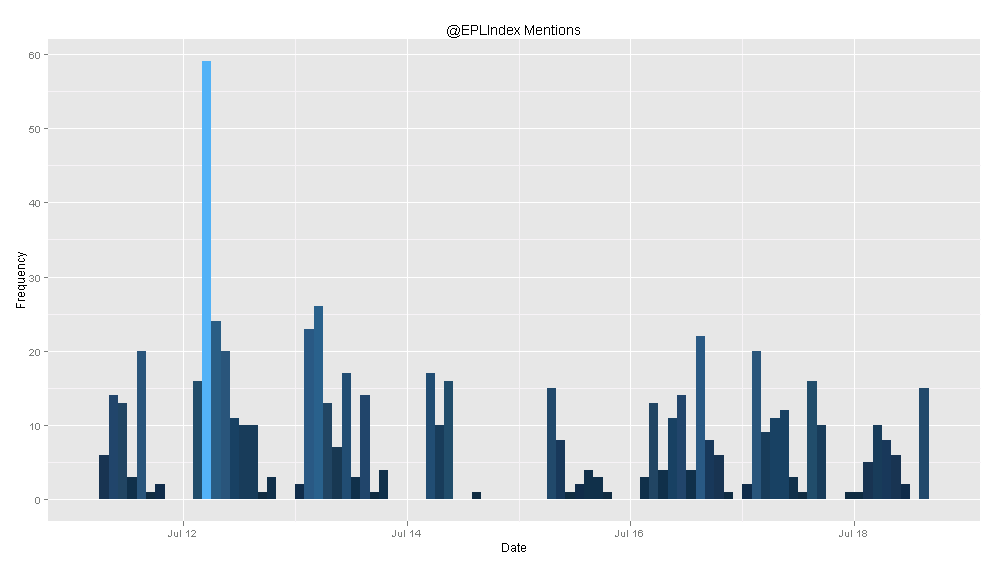Visualizing Twitter Data
Ford Bohrmann
Inspired from this post on plotting the frequency of Twitter hashtags over time, I was interested in trying to apply this to soccer some way. While not the most technical analysis, I thought it would be interesting to use this tool to analyze transfer rumors.
To summarize the process quickly, there is a package in R (open source statistical software) called TwitteR which allows you to pull Twitter data. It's actually a fairly easy process, especially if you follow the tutorial in the link at the beginning of this post.
As most Twitter users know there is a seemingly unlimited number of transfer rumors circulating Twitter. These range from being fairly plausible to pretty ridiculous ("Ronaldo to the Philadelphia Union???). As a Manchester City supporter, I was curious at looking at a few popular transfer rumors related to City.
Robin van Persie to Manchester City:
Yes, this is definitely a rumor, and yes, it is probably not going to happen. But I was still curious. Below is a plot of the frequency of the number of tweets that include "Robin van Persie" and "Manchester City". Of course, this is an imperfect method, but it still gives us an idea of what is going on in the Twitter transfer rumor world.
To explain, the graph below measures the number of tweets described above at a 2 hour interval for the past week. This means the height of every line gives us the number of tweets referencing RVP and City in that 2 hour interval.
Carlos Tevez to AC Milan:
After Tevez's past season with the club, there are obviously transfer rumors concerning Tevez all over the place. Because of this, it was hard not to want to look at the data on Tevez. I picked AC Milan because it seemed like the club he had the highest likelihood of going to. Like above, I searched for tweets that included "Carlos Tevez" and "AC Milan". The frequency of these tweets, in 2 hour intervals, is plotted below.
You can try to analyze these graphs to find some meaning, but they are more just a fun exercise than anything else. The TwitteR package lets you do other cool things, like plot the frequency of Twitter mentions for a user. I did this for another site I write for, EPL Index. They tend to get a lot more mentions than @SoccerStatistic does, so I thought it would be more interesting to plot the frequency of @EPLIndex mentions. Again, the intervals are every 2 hours.
Like I said before, this analysis is not very insightful or ground-breaking, but still pretty cool nonetheless. The possibilities for future analysis like this are almost endless, so if people have good ideas of Twitter data to visualize, I'd love to hear them.




